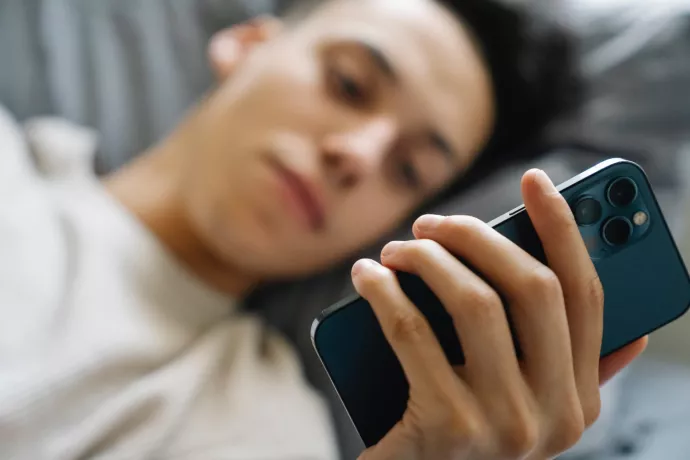Researchers track global smartphone addiction patterns in largest-ever study

Are you addicted to your smartphone? So is most of the world, it seems, based on new research from the University of Toronto.
A team of researchers including U of T Mississauga postdoctoral fellow Jay Olson and U of T Scarborough PhD student Dasha Sandra have collected the largest set of data in any study regarding problematic smartphone use.
The study, published in International Journal of Mental Health and Addiction, involved collecting survey responses from 50,423 participants aged 18 to 90 across 195 countries. The most consistent findings show that among 41 countries with at least 100 participants, women scored higher than men in problematic smartphone use. This was inversely proportional to age. That is, the older a user is, the less likely they are to have problematic smartphone use.
“We weren’t expecting this kind of robust consistency,” Olson says of the data.
Since it covered so many countries across several continents, the data also allowed researchers to identify geographic patterns. The highest scores of problematic use were found in Southeast Asia, while the lowest were in Europe.
Olson says the results prompt “fundamental questions in the field.” Why are women shown to have higher rates of problematic smartphone use? What is it about young people that increases their likelihood of problematic use? And what are the social and cultural differences from country to country influencing these results?
Participants of the survey answered questions according to the Smartphone Addiction Scale, a widely used measure to study problematic smartphone use in the field.
Olson says he thinks higher problematic use among women may have something to do with how each gender generally uses their smartphones.
“Researchers think women tend to use their phones more for social reasons, communication with friends and family via social media,” he says. The kind of use related to social validation (think “likes” on Instagram) are “the kinds of uses that can build habits very quickly.”
It’s not that men don’t use their phones for social reasons. But they tend to use less of the social functions, like posting selfies, keeping up with group chats, connecting with family or following influencers, Olson says.

The research team aims to test this hypothesis as they continue to analyze the data.
Problematic usage can also reflect distress or anguish experienced by individuals. “People try to avoid negative emotions by using their phone,” Olson says. “Kind of like an adult pacifier.”
Differences in both gender and age can be related to differences in distress levels.
The research also accounts for cultural differences between so many different countries. Using an index of “cultural tightness” and “cultural looseness,” it tries to look at the data through these varying social norms across the globe. The distinction can also be made by examining collectivist cultures, which prioritize group connections, versus individualist cultures.
Their hypothesis is that the strictness of social norms plays a role in smartphone use. In an individualistic culture, “it’s not expected that you would be calling your family every day,” Olson says as an example.
Another factor to consider is where participants get their screen time.
“Some countries skipped over having widespread laptops and desktop computers,” Olson says, describing a “leapfrog” where countries developed their telecommunication industries and smartphones became people’s primary computing device as opposed to countries that had developed telecommunication industries before smartphones.
“It explains some differences in screen time,” Olson says.
For example, Europe, which recorded the lowest rates of problematic use, has been using the internet since it first arrived on personal computers in the 1980s and 1990s. While Southeast Asia, which recorded the highest rates of problematic use, had widespread adoption of the internet via smartphones in just the last 15 years.
But not all smartphone use is problematic, Olson says, as it largely depends on how an individual is using their phone.
“A social media manager could be logging eight hours of screen time a day, but this doesn’t necessarily have a problematic effect on your life versus somebody who uses their phone for half an hour from midnight to 12:30 a.m. while trying to fall asleep,” he explains.
The research team plans to run a longer-term version of the survey to track smartphone use over time. Will addiction rates climb, or will they plateau? The team is also looking into developing a habit-based intervention for problematic smartphone usage, for which data like this is critical.
“This is in some sense a global experiment,” Olson says. “Smartphones became popular around 2008 and we’re just tracking the effects of this globally, post-hoc.”




